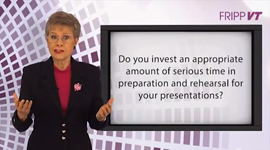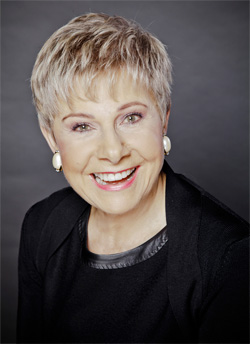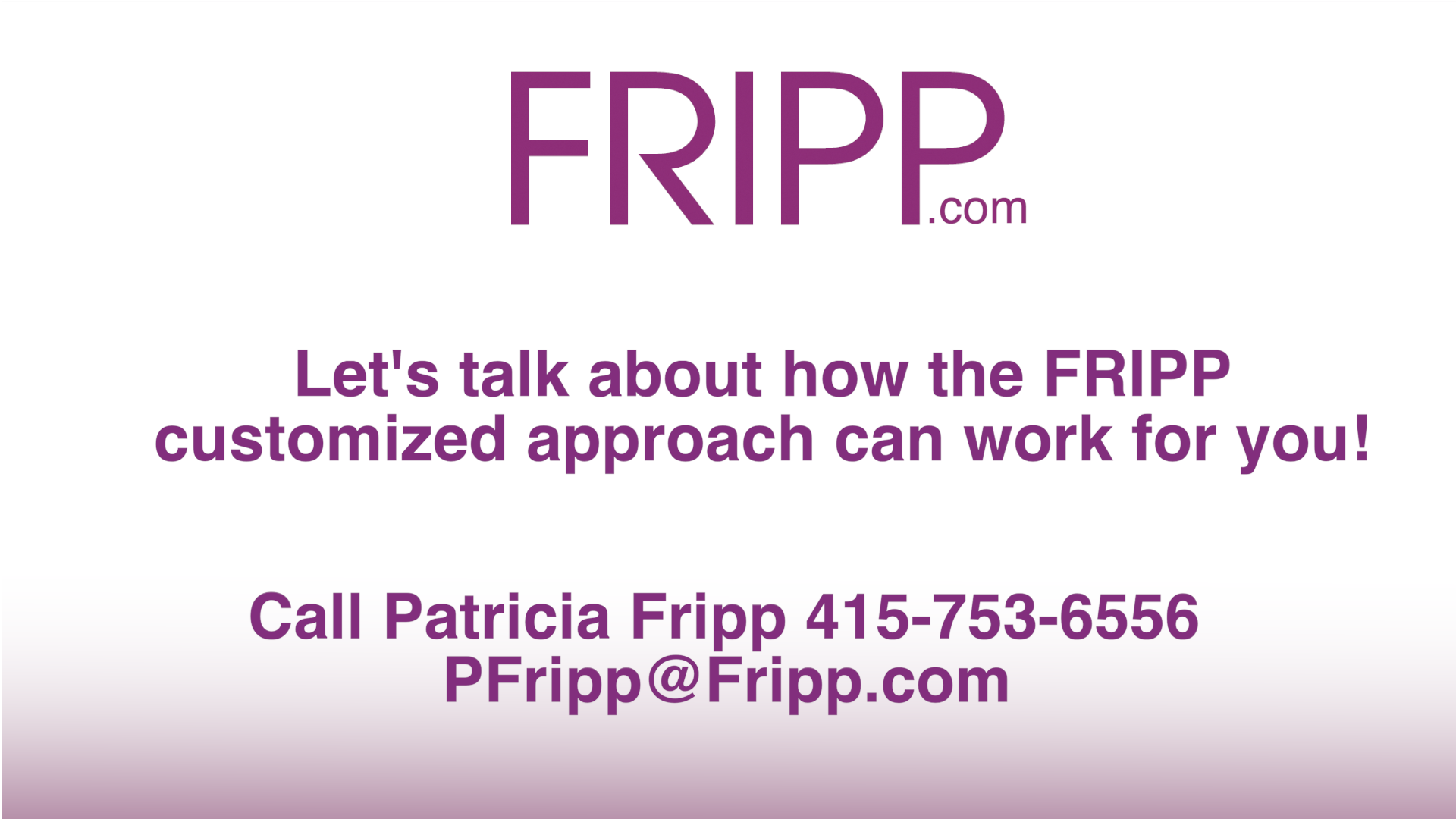
Salespeople have an awesome responsibility. Whenever they open their mouths, they are putting themselves and their entire organization on the line – taking a risk in the hope of a favorable outcome.
Even the best, most experienced salespersons can benefit from the coaching and polishing of an expert coach and trainer. Here are the 12 most common mistakes that my sales clients are making at the beginning of our coaching sessions. By the time we’re through, they’ve learned how to avoid them.
The 12 Biggest Sales Presentation Mistakes Salespeople Make and How to Avoid Them
1. UNCLEAR THINKING. If you can’t describe the objective of your interaction in one sentence, you may be guilty of fuzzy focus, trying to say too much at once. You’ll confuse your listener, and that doesn’t make the sale. Decide exactly what you want and need to accomplish in this contact. What would be a positive outcome? For example, imagine that a busy executive says, “You have exactly ten minutes of my time to tell me what you want me to know about your company. In one sentence, tell me how I should describe your benefits when I talk to my managers tomorrow.” At any stage of the sales process, you should know in advance why you are interacting, what benefits you are offering your prospect or client, and what you’d like the next step to be.
2. NO CLEAR STRUCTURE. Make it easy for your prospect to follow what you are saying, whether in a casual conversation or a formal presentation of information and ideas. They’ll remember it better–and you will too. Otherwise, you may forget to make a key point. If you waffle or ramble, you lose your listeners. Even for a conversation, mentally outline your objectives. What key “Points of Wisdom” do you want the prospect to remember? How will you illustrate each point? What colorful examples will your prospect be able to repeat three days later? What phrases or slogans do you want to guarantee they will repeat afterward? You speak to be remembered and repeated.
3. TALKING TOO MUCH. Salespeople often talk too much about themselves and their service or product. They make a speech rather than having an exchange or interaction, otherwise known as conversation. The key to connecting with a client is conversation; the secret of client conversation is to ask questions; the quality of client information received depends on the quality of the questions–and waiting for, and listening to, the answers! In fact, a successful encounter early in the sales process should probably be mostly open-ended questions, the kind that require essay answers rather than just “yes” and “no.” And don’t rush on with preprogrammed questions that pay no attention to the answer you’ve just received. Learn to listen, even pausing to wait for further comments. Silence draws people out.
4. NO MEMORABLE STORIES. People rarely remember your exact words. Instead, they remember the mental images your words inspire. Support your key points with vivid, relevant stories. Help them “make the movie” in their minds by using memorable characters, exciting situations, intriguing dialogue, suspense, and humor. Telling stories of satisfied clients and painting a picture of how this client’s condition will be improved with your product or service are appropriate.
5. NO THIRD-PERSON ENDORSEMENTS. There’s a limit to how many bold claims you can make about your company and product results, but there is no limit to the words of praise you can put in the mouths of your delighted clients. Use case histories of your clients’ success stories about the benefits they received from your service or product. When you are using their actual dialogue, you can say much more glowing things about yourself and your company than you could if the words were your own. Your endorsement stories should use the same ingredients as a good Hollywood movie: create memorable characters, use vivid dialogue, and provide a dramatic lesson learned.
The dramatic lesson learned in your Hollywood story will be the benefits of doing business with you. Choose characters that your prospects can connect with. It helps if the star of your story holds a similar position to your prospect. You can’t say, “Do business with me, and you’ll get promoted,” but you can give a specific example of someone who phoned, e-mailed, or wrote you that this happened to them. “Just last week,” you might say, “I heard from Mary Smith. She’s the Payroll Manager at Amalgamated Systems. She said that changing their payroll system to our company not only made them more efficient, but they cut their costs 10%. She told me, ‘You made me look good in the eyes of management. Thanks to you, I received a promotion!'” That’s an emotional connection.
6. NO EMOTIONAL CONNECTION. The most powerful communication combines both intellectual and emotional connections. Intellectual means appealing to educated self-interest with data and reasoned arguments. Emotion comes from engaging the listeners’ imaginations, involving them in your illustrative stories by frequent use of the word “you” and from answering their unspoken question, “What’s in this for me?” Obviously, a customer is going to justify doing business with you for specific analytical reasons. What gives you the edge–what I like to call the “unfair advantage”–is creating an emotional connection too. Build this emotional connection by using stories with characters that they can relate to and by providing a high I/You ratio, using the word “you” as often as possible and talking from their point of view.
My recommendation is that you make telephone appointments with your happiest clients. Tell them you would like to use their stories about working with you as an endorsement, and ask permission to tape record your conversation. Then just let them talk. The more they say, encouraged now and then by a question from you, the better their stories and quotes will be. Finally, select the best quotes from what they’ve said.
7. WRONG LEVEL OF ABSTRACTION. Are you providing the big picture and generalities when your listeners are hungry for details, facts, and specific how-to’s? Or are you drowning them in data when they need to position themselves with an overview and find out why they should care? Get on the same wavelength with your prospects. For first contacts with executives, describe what your company can do for them in broad generalities. With middle managers, discuss exactly how you can work together, a medium level of abstraction. If you are dealing with IT professionals, use the lowest level of abstraction, lots of facts and figures. Don’t discuss aspects or details of what you’re offering that your audience has no interest in.
8. NO PAUSES. Few sales presentations have enough pauses. Good music and good communication both contain changes of pace, pauses, and full rests. This is when listeners think about important points you’ve just made. If you rush on at full speed to crowd in as much information as possible, chances are you’ve left your prospects back at the station. Give them enough time to ask a question or even time to think over what has been said. Pauses allow pondering and understanding.
9. IRRITATING NON-WORDS. “Hmm… ah… er…” “You know what I mean…” One presenter I heard began each new thought with “Now!” as he scanned his notes to figure out what came next. This might be okay occasionally, but not every 30 seconds. Practice in front of your sales manager or colleagues, giving them permission to call out whenever you “hem” or “ah.” Or video or digitally record yourself, and note any digressions.
10. STEPPING ON THE PUNCH-WORD. The most important word in a sentence is the punch-word. Usually, this is the final word: “Take my wife – PLEASE.” But if you drop your voice or add, “Right?” or “See?” or “You know?” or “Okay?,” you’ve killed the impact of your message. Another popular punch-line killer is the word “today.” Avoid saying, “Let’s look at the recommendations we have for you today.” Obviously, you’re talking “today.” The punch word in this sentence should be “recommendations.”
Comedian Jerry Seinfeld says, “I’ll spend an hour reducing an eight-word sentence to five words because the joke will be funnier.” I train sales teams to do the same thing with their key phrases because their presentations will be more powerful. We go through their sentences, looking for the “$10 words.” Not every word or phrase is, or should be, of equal importance. Emphasize the action words and phrases or those that make an emotional connection. “And”-“it”-“in” are no-dollar words.
One recommendation I make to sales teams is to came up with what I call “$100 phrases.” My clients get excited and call out, “Wow, that’s SO good!” whenever someone uses an especially potent phrase. Often it is a succinct term for a hard-to-describe benefit. Such a phrase can be priceless. For example, a company offering a complex process might explain, “We’re like a security guard that keeps the bad guys out and lets the good guys in.”
To find $100 phrases for your company, I suggest this process: Imagine you’re trying to explain what you do to your 82-year-old great aunt. How you describe it should be part of your conversational sales presentation. This is an especially good technique to use for executive overviews. If your $100 phrase is “visual enough,” your prospects and clients will repeat it later.
11. NOT HAVING A STRONG OPENING AND CLOSING. Engage your audience immediately with a powerful, relevant opening that includes them. For example, “You have an awesome responsibility.” Then fill in what it is: increasing sales, reducing errors, cutting overhead, whatever your product can help your prospect do. Another excellent strategy is to do some research. Then you can say, “Congratulations on your company’s recent success,” and describe it. Or “I love your new commercials.” Most salespeople start by talking about their company. Talk about your prospect instead.
Whenever I give a speech for a company, I check study their website, corporate reports, or press releases to find something their Chairman of the Board or CEO has said that I can quote. You can do this too, making it almost sound as if their CEO is recommending your company. For example, “Our core values are…” and match them to your own. Or, “We subscribe to Best Practices, and all our preferred vendors do as well.” That’s you!
To close, pick the one sentence that you absolutely want embedded in their minds, even if you don’t get the appointment or the sale. Leave them with a strong, positive message. They might say, “We’re happy with our present vendor.” You reply, “I appreciate your LOYALTY (a $10 word.) If you ever want a SECOND vendor ($10 word) or for any reason they DISSATISFY ($10 word) you, you need to do business with a company that will be around LONG-TERM ($10 word.) Please remember, we’ve been PROFITABLE ($10 word) for the last 167 quarters ($10 word.)”
In the search for $100 phrases, don’t just add up $10 words. A $100 phrase stands alone. It is a repetitive refrain that is so valuable to your company that every salesperson needs to be trained to use it in every presentation.
12. MISUSING TECHNOLOGY. Too many salespeople rely too much on their PowerPoint and flip charts and not enough on making an emotional connection. My friend, Charles H. Green, co-author of The Trusted Advisor, writes about four advertising agencies that were given an opportunity to bid for a large account. Each group had two hours.
The last team walked in and said, “We’re ready to do exactly what the other three competing agencies have done. We can give you the ‘Dance of a Thousand Slides,’ but you have a choice. You can pretend you already hired us, and for the next two hours we can start brainstorming on your account. If you hire us, you’ve received two free hours consultation, and if you don’t, you’ve still had two hours free.” They proved they could think on their feet and be flexible. This won them a very profitable account. They showed they could use the latest technology, but, more important, that they didn’t need it.

“Whenever you’re being considered for a job,” says Charlie “act as if you already have it. Most people want to think that the quality of their work speaks for itself. It doesn’t. Beat your competition by getting to work for your prospect immediately. Demonstrate how it will feel to be working together.”
All four agencies could have done a fine job. The one that landed the account had enough confidence in their presentation skills to use technology or not. The client was exhilarated by their work session, impressed by the agency’s flexibility, and confident this agency would and could do a great job. Many sales teams couldn’t communicate with a prospect for two hours without the help of a suitcase full of charts, slides, and electronic equipment.
Bottom line: Make technology support, not a crutch.
When you learn to avoid these 12 common traps, you’re on your way to being a “star” of the sales world, ready to accept an award for your dazzling performance.
![]() If you and your sales team are losing out because of poor presentation skills, why not get the help you need on your own schedule? Enjoy our sampler of sales presentation advice.
If you and your sales team are losing out because of poor presentation skills, why not get the help you need on your own schedule? Enjoy our sampler of sales presentation advice.
Imagine a training program that gives you 24/7 access to one of the most in-demand executive speech coaches and sales presentation experts. Fripp Virtual Training is designed to be immediately engaging and makes it fun to learn. If you are a novice presenter or a seasoned professional, you will find the content both practical and relevant.
Sign up for your complimentary trial and discover how FrippVT can transform you and your team. FrippVT delivers high-caliber comprehensive presentation and sales presentations skills training with built-in accountability. http://frippvt.com
“Back in 2018, we invited you to help us with an important sales presentation, which we won. You will be as excited to know, that it continues to reap dividends! Last year, we were awarded $1.6 million in business with them. We just received a $2.8 million order from them already this year and it is still January. Your advice and coaching are awesome. What an ROI!”
Michael E. Stryczek, President & CEO, AB&R® (American Barcode and RFID)
Need help for you or your team on improving important conversations and presentations? The Fripp Customized Approach will work for you. Contact Fripp today!


I don’t recall identifying filler words as NON-WORDS. I like it. I attended a financial group last week and the CEO of the company and with an enormous background as an attorney needs the first 11 of your points. Unfortunately, I think he would have been better off if he did rely on PowerPoint. It took him 1 hour to present what he could have presented in 20 minutes if he took your suggestions — and he was the keynote speaker. He had some very important information intermingled with a lot of uninteresting facts and quite a few “non-words.”
Two points I would add to your list, if you don’t mind are:
Don’t overuse gestures and make sure that the gestures enhance the presentation. If you are not sure, videotape your presentation and watch it — without the sound. Are the gestures meaningful and do they add to your presentation? Can you identify the meaning of the gestures, e.g. go forth, big, tiny, etc.
Finally [and taking from your definition of filler words] do you have non-gestures? If you do, then keep your hands down to the side and don’t use them.
First, write your presentation and start with the conclusion first. Identify the call to action. Then work backwards to support your conclusion. And by the time you are finished, you should know how to begin with an attention getter. This way, you may have to reduce some of the verbiage, but perhaps from 35 minutes to 30 minutes rather than 1 hour to 30 minutes — if you begin writing the opening of your presentation.